Released: 21st August 2006
Writers: Hilary Duff / Kara DioGuardi / Rhett Lawrence / will.i.am
Peak position: N/A
Chart run: N/A
Play With Fire offered a first glimpse at what would eventually transpire to be one of the most essential pop albums of the ‘00s. No, really.

Up until this point, the design behind Hilary Duff’s material had been to hitch her image and sound to the pop-rock bandwagon. It was a savvy move – albeit one to which she had little input – that responded to changing market trends and found the best way to make her music palatable to an audience who would otherwise be all too eager to dismiss it. However, things had taken a wrong turn with Hilary Duff’s self-titled third studio album in 2004, which failed to yield any hit singles in America. Promotion was quickly curtailed, and instead, Hollywood Records chucked out a greatest hits compilation called Most Wanted. There was a degree of consternation at this, considering you could count the number of singles she’d released on one hand. Nevertheless, it included three new tracks, which teasingly hinted that a change was afoot. As Hilary Duff started to get more involved in creating her own music, it was evident that she was moving away from pop-rock and gravitating towards dance and electro.
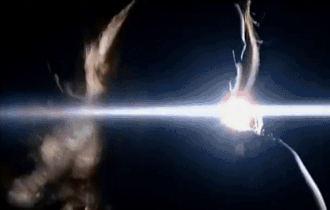
The merits of Most Wanted as a greatest hits are debatable. All the same, there was little precedent for modern pop acts to extend their shelf-life beyond one (Britney Spears wouldn’t make her comeback for another year yet), so Hilary Duff was entering was relatively uncharted territory. However, it’s clear that after being steered to this point, she was ready to have her say – co-writing 13 of Dignity‘s 14 tracks – and choose how she put her message across. To describe Hilary Duff as a risk-taker barely does justice to her vision for the project because this wasn’t really a risk at all; it was commercial self-sabotage. There was no established market for electro-pop – certainly not in America – so she was almost certainly setting herself an unassailable path to success. That didn’t stop her attracting some big names to the project, though; the album credits feature contributors that you would not expect to see here: Ryan Tedder, P!nk, and – in the case of Play With Fire – will.i.am.
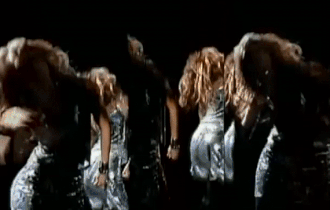
This actually started life as a different song altogether. It was initially composed as a track called Happy, which would eventually be reworked for Dignity. The instrumental, however, was retained for what would become Play With Fire, and an early version of it can be heard in a trailer for the film Material Girls, starring Hilary and Haylie Duff. So, what we ended up with instead is a brilliant little track that serves as a cutting kiss-off to a former lover. In truth, you wouldn’t necessarily know that will.i.am had anything to do with the song. He doesn’t feature on it vocally, and the production was handled by Rhett Lawrence. But the important thing is that his name is attached, which sent a clear message about Hilary Duff’s ambition and the calibre of collaborators that were now working with her. This was a big deal at a time when he worked almost exclusively with R&B acts, and his presence – in whatever capacity – was a mark of credibility for the track that was bound to pique interest.
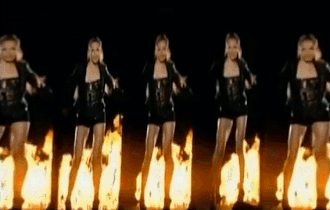
Play With Fire is a heady mixture of elements, featuring a gurgling, fuzzy electro bassline, groaning electric guitar riffs, scruffy record scratches and a strut beat that ticks along with metronomic precision. Yet, the mastering feels (intentionally?) rough around the edges, further adding to the sense of Hilary Duff stepping boldly into the unknown. Although she was still signed to a major label, this does not feel like the song Hollywood Records would have had her record through choice. However, Hilary Duff had been around long enough to know who she was. Or perhaps, who she wasn’t. Play With Fire is an angry pop song; it’s loaded with hurt and pain that is expressed in a quietly seething – almost conversational – manner as she unleashes a string of digs: “I can’t believe it’s really you, been so long, you look good, I hear you’re doing really well, don’t ask me, let me tell you; how I’ve been since when you left, since you left me for dead”. There’s a palpable discord between the innate pleasantry of her tone and the simmering vitriol of her words, which culminates in a brush-off like no other: “So don’t you sit there trying to give me more excuses, I don’t have time for this, I’m off to play in Houston”.

While everything about Play With Fire suits Hilary Duff down to the ground, one of the most obvious benefits is how her voice works within the track. A consistent – and not undue – criticism of her earlier material was that she lacked the range and power of her pop-rock contemporaries, meaning it often felt like she was quite literally fighting to be heard. That’s never the case on Play With Fire, which can distort and echo her voice to fit the style of the song. Whether it’s the middle-eight: “Oh, by the way, by the way, I’ve found someone who gives me space, keeps me safe, makes me sane, found someone to take your place”, subtly underlined by a gentle guitar melody that mimics the vocal line. Or the abrasively filtered: “Burn into the sky” hook; the track manages to create a sense of scale and depth to Hilary Duff’s performance. Fundamentally, her voice is what it is – no one is really pretending otherwise – but it’s rarely sounded better than it does here, thanks to the tricks of the production.
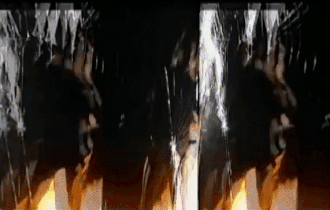
The music video for Play With Fire was talked up as being comparable to the White Stripes’ Seven Nation Army, not least because they shared the same directing duo in Alex and Martin. It’s debatable whether the end result is quite so effective in this case (it certainly wasn’t helpful that the song wasn’t completed until a few hours before the video was filmed). Still, it is a striking effort, nonetheless. The aesthetic is dark and trippy; it features mirrored images of Hilary Duff cycling around the screen while glass shatters and flames (in keeping with the theme) burst in time with the beat. If you focus on a single shot in isolation, she’s not actually moving very much; the choreography primarily consists of her bopping on the spot. However, the editing creates a hypnotic dynamism to the sequences so that it’s almost kaleidoscopic. Visually, Play With Fire looks edgy and cool. Well, as much as a Hilary Duff video ever could. It fits the song perfectly, even if there is a sense that – intentionally or otherwise – it was pushing her further still from the mainstream.
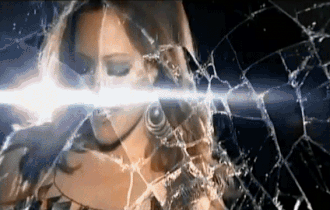
Although mooted as the lead single from Dignity – which it still is, technically – the performance of Play With Fire in America saw it quietly downgraded to a buzz release after it failed to gain any serious momentum. The track garnered a modest amount of club play in America to reach #31 on the US Dance Chart, which meant it was opening doors for DJs to consider a Hilary Duff record in their sets. But otherwise, Play With Fire’s impact was minimal; and it seemed for a brief moment that the album campaign was over before it started, as it would be another six months before the next single. Yet, disappointing as it seemed at the time, this was a crucial step in laying the groundwork for Hilary Duff to release Dignity. Even though With Love became the de-facto lead single outside of America, Play With Fire – which was relegated to a B-side – had made enough waves for her new direction not to come as a total surprise.
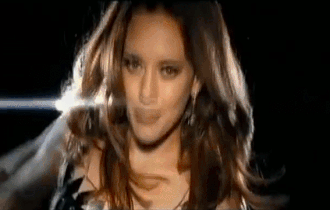
And that will probably always be the legacy of this track. As a lead single, it faltered. But as a piece of the jigsaw that allowed Hilary Duff to go on and release the best album of her career, Play With Fire was inarguably one of the most important steps she ever took.



